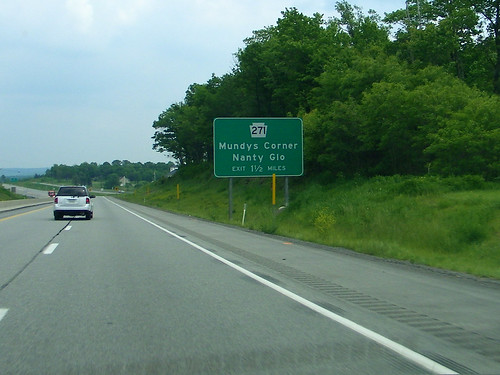I found myself in familiar territory once again, with an overflowing backlog of article ideas. That signaled time for another round of house cleaning. In the past I’d featured weird place names that I’d encountered while I searched for other topics. Then I focused on More Weird Place Names and finally Even More Weird Place Names. I thought I could build upon that theme while cutting down the pile. Those weird place names just kept coming.
Woolfardisworthy
First I decided to take care of some unfinished business left over from the previous effort. Reader “Kiru” said, “Just a suggestion for the next one – there’s a small village near me in Devon, England called Woolfardisworthy. As weird of a name that is, the pronunciation is even worse!“
That sounded intriguing. The next opportunity arrived today so I decided to check it out. Also I couldn’t even imagine how to pronounce it. I considered I’d probably butcher it with my mid-Atlantic American accent even if I knew. Fortunately things like YouTube existed and I found my answer easily enough. Kiru knew the deal. Woolfardisworthy, when spoken through the mouths of local residents came out something similar to Woolsery.
I solved that mystery quicker than I expected although I encountered something more unusual in the process. Two towns with that same strange name existed in Devon. Was the town Kiru referenced located in mid Devon (map) or north Devon (map). They sat about 48 miles (78 kilometres) apart map.
Their history also intertwined. According to Tour Devon, the name came from the Saxon language meaning Wulfheard’s homestead, “denoting the fact that the village was probably originally founded in 680 when the Saxon Abbot Wulfheard of Crediton was granted two manors.” I figured the one in north Devon in the Torridge district was probably the right one. It seemed to be the larger of the two manors granted to the awesomely named Wulfheard of Crediton.
Neversink River

The buoyancy on the Neversink River must be amazing. I supposed someone could fall overboard and literally never sink. Nobody needed life jackets. What magical properties existed in the waters of New York? I pondered that notion as I drove across the Neversink on the way to New England recently. The river stretched about 55 miles (89 km), flowing past Port Jervis before joining the Delaware River. It served as one of the important water sources for New York City, dammed to form the Neversink Reservoir in 1950 (map).
The etymology remained uncertain although it most certainly did not come from the English words Never and Sink, sad to say. It likely passed down from the original Native American inhabitants speaking an Algonquin language. The Intertubes offered various theories and translations. Many of them converged on Mad River or Wild River, or variations on that theme. European settlers Anglicized the phrase into something more familiar that they could actually pronounce.
Nanty Glo

I’d seen Nanty-Glo spelled with a hyphen and Nanty Glo without it, so I consulted the Geographic Names Information Center. That hardly cleared up the situation, however. According to the US Geological Survey, the hyphen should be used when referring to the Borough of Nanty-Glo and dropped for the Town of Nanty Glo. Either way, they both designated the same basic area in western Pennsylvania (map).
The name intertwined with the history and geology of the underlying terrain. Local mountains contained large coal deposits that people began to mine in the Nineteenth Century. Immigrant from Wales — another area with a rich coal mining tradition — brought much of the mining knowledge and labor. Thus the name came from the Welsh language, Nant Y Glo, meaning a ravine, brook or valley of coal.
A similarly-named town of Nantyglo also existed in Wales (map).
Ixonia

I’ve driven between Milwaukee and Madison, Wisconsin on Interstate 94 more times than I can probably count. I always wondered about the town behind the exit sign for Ixonia (map). Did it reference a fascination with the number nine, from the Roman numeral IX? No, actually it reflected pure happenstance when a dispute arose as the township formed. According to the Town of Ixonia,
“To simplify matters it was agreed upon to put the letters of the alphabet on slips of paper and have young Mary Piper draw them until a name could be formed. As the result, ‘Ixonia’ was the name given town 8 on January 21, 1846, and remains the only town bearing this name in the United States.”
Thankfully, young Mary Piper selected a random combination that everyone found acceptable. She could have done a whole lot worse as she averted a crises single-handedly. However I still remained skeptical. If Ixonia began life as Town 8 wouldn’t it make sense to name it sequentially the next time, as IX?
Geo-geek conspiracy theory!
Programming Note
I’ve published Twelve Mile Circle on a Sunday morning / Wednesday evening schedule for awhile. I now have a weekly Wednesday evening activity that complicates things so I plan to post on Thursday evenings instead. Don’t panic when nothing appears on Wednesday. 12MC isn’t going away!

Leave a Reply